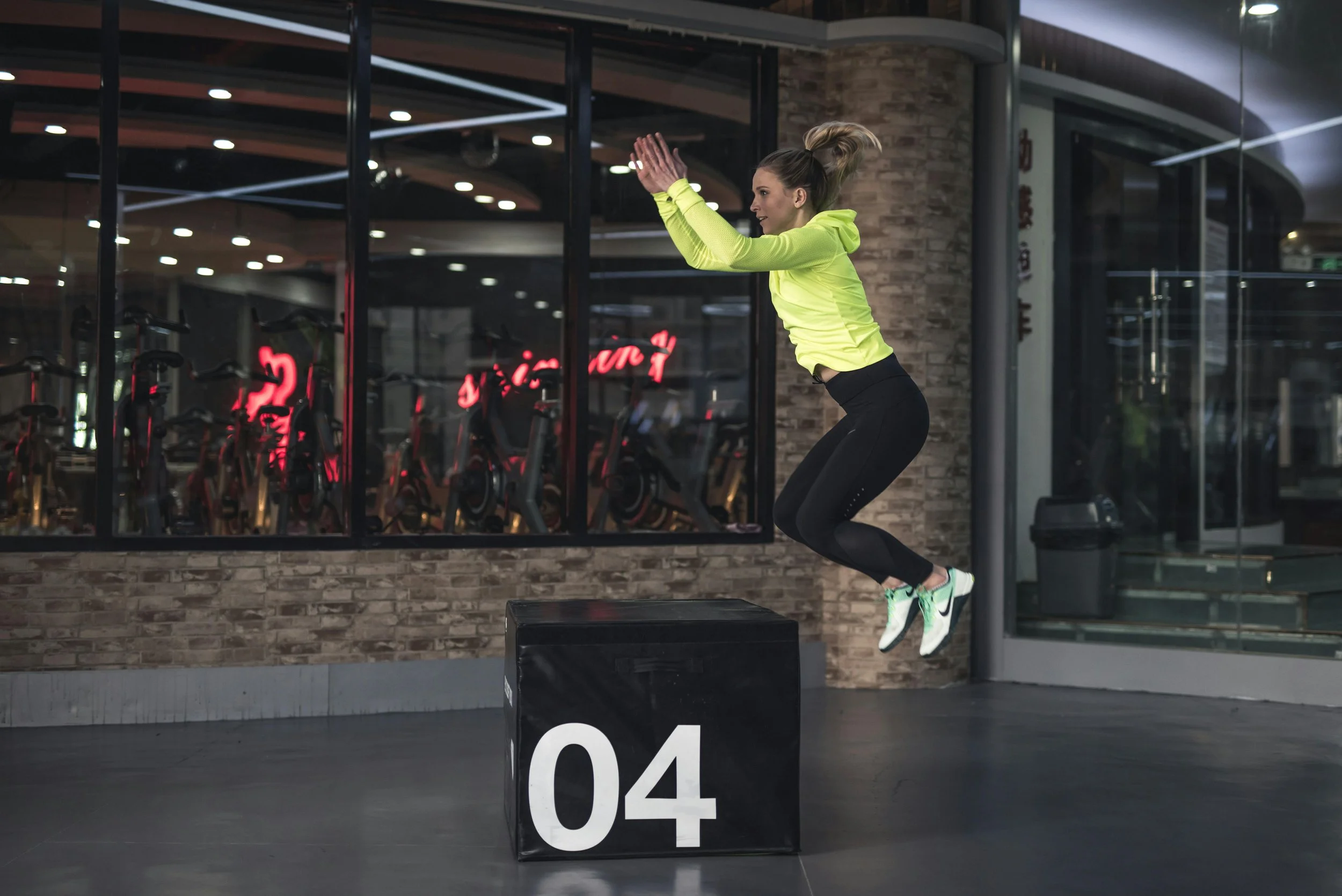IN THIS LESSON
YOU GOTTA JUMP BEFORE YOU CAN RUN
Running is 170 single leg hops per minute, over and over again, for hours. Those hops can carry up to 2.5x your body weight in each one, depending on how fast you’re running. It’s a lot and the body needs to be prepared ahead of time to handle such a load. That’s why we start with jumping. But when and how do you introduce plyometrics into a recovery plan? Let’s dive in.
When to Start Plyometrics
Athletes returning to sport activity need to hit a baseline before bringing plyometrics into play. Part of this process is going to be your clinical judgment, but there are some good guidelines to follow when getting started with functional hopping and jumping.
Prior to starting plyometric training, an athlete should have:
The ability to walk for 30 minutes without pain
Full joint ROM relative to the unaffected side*
At least 80% of the strength of the unaffected side
No edema, or minimal at most
*This one is up to your clinical judgment, like all of them, truly. Sometimes, when returning from an ankle sprain, for example, full ROM is tough to come by and only develops late in the rehab process. In the case of a knee replacement, full ROM may never return. You have to use your own judgment in this part of the process.
At this point in the rehab process, your athlete is going to feel pretty “normal”. This is one of the most risky parts of the process and achieving athlete buy-in is key. Normal feeling athletes are going to want to do normal things, like return to run without guidance. Don’t be surprised if your athlete reports that they tried running last week. Also don’t be surprised to hear that it didn’t go well. Sometimes we have to let athletes make their own mistakes and learn from them from experience. Ideally, you’re able to get ahead of that by warning them how they’re going to feel good, but still aren’t ready to do any running. They need to get through introductory plyometrics first, then try return to run testing, then begin a run-walk program to make sure they’re ready to go.
As an athlete, this part sucks. A runner wants to run. Your runner will want to run. Now that they can walk without pain, feel strong, and don’t have swelling, they’re really going to want to run. This is the most important time to make sure that your athlete is on board with the process. If you haven’t outlined the return to run plan yet, now is the time. If an athlete doesn’t think you have a well thought out, specific plan, they’re going to take the process into their own hands and open themselves up to increased risk. So get them on board with the process and start diving into plyometrics.
Which Plyos To Do
Once your athlete is ready to do plyometrics based on the criteria above, there’s a logical order to progress them through. We start with double leg hops, progressing to make them more and more dynamic, before turning to single leg hops and increasing their dynamism. The goal is to expose the athlete to controlled forces as they are ready for them, so make sure they respond well to each type of hop before progressing to the next. They should be able to perform the hop at least 20 times without pain and with good control before progressing to the next. We recommend spending at least one week on double leg hops prior to progressing to single leg, even if the athlete is responding well to double leg hopping activity. Don’t be surprised if an athlete has some soreness after beginning jumping activity, this is normal. Soreness is expected, pain is not. If an athlete has pain at any point in the progression, back the progression down and reassess ROM, strength, and edema.
Double Leg Progression
Hop in Place
Forward Hop
Backward Hop
Side-to-Side Hop
Scissor Hop
Dot Drill
180 Rotation Hop
Combined Dot and Rotation Hop
Drop rebound hops
Single Leg Progression
Hop in Place
Forward Hop
Backward Hop
Side-to-Side Hop Over Line
Dot Drill
Speed Skaters
90 Degree Hop
Drop rebound hops
Next Steps
Simply performing these plyometrics without pain is not sufficient to allow return to run. They need to be performed with good form throughout. That means:
No symptoms reported from hops
No notable knee valgus
Toe to heel landing
No trunk lean
Soft landing control
If your athlete is able to perform 250-300 hops in one session while hitting these criteria, it’s time to step up into a full return to run assessment and start a graduated return to run program. They’re almost there, just a few more steps before they’re out running again.


